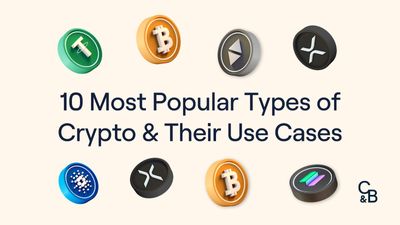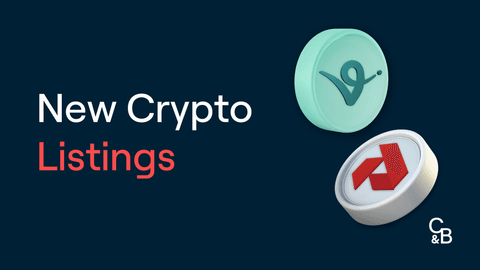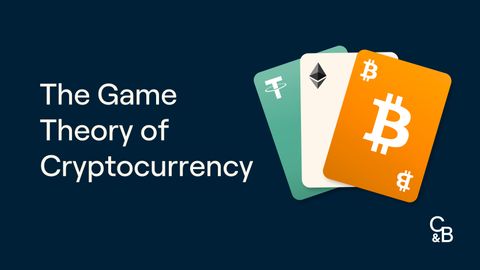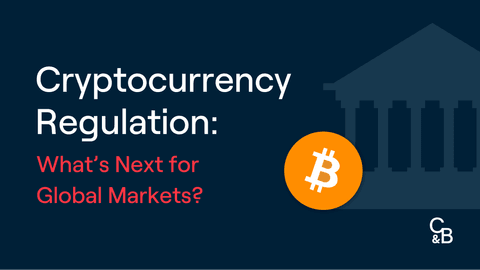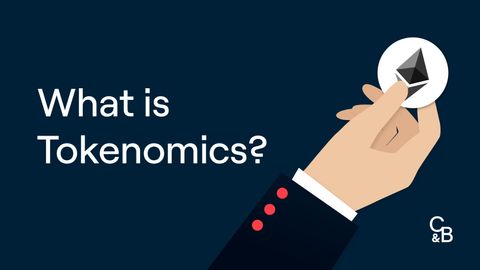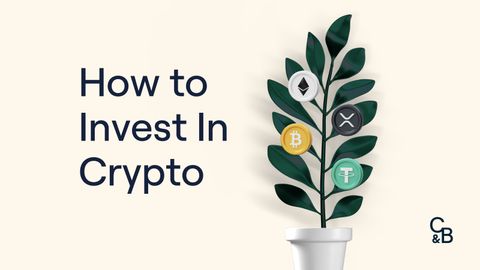Types of Crypto (with examples)
FAQs
Make Your First Crypto Investment
Key points
- There are several types of cryptocurrencies, such as currencies, memecoins, utility tokens, security tokens, and stablecoins. Each cryptocurrency serves a distinct purpose, contributing to a diverse crypto ecosystem.
- Any cryptocurrency other than bitcoin is referred to as an altcoin. These coins iterate upon the original blockchain concept, often offering different use cases.
- At the time of writing, almost 17,000 cryptocurrencies are tracked across over 1,300 exchanges. These cryptocurrencies comprise the US$3.9 trillion-plus cryptocurrency market.
- Understanding the different types of cryptocurrencies and how they work can help you complete thorough research throughout your trading and investing journey.
Types of Crypto (with examples)
From currencies and utility tokens to memecoins and gaming and entertainment tokens, there are almost 17,000 cryptocurrencies available in today’s crypto market. Below, we’ve outlined ten popular cryptocurrencies and their use cases. Keep reading to learn more.
Currency
The original use case for cryptocurrency was for it to operate as digital cash. A borderless, accessible alternative to fiat currency, facilitating peer-to-peer payments, currency tokens can be thought of as digital money sitting on a decentralised network. Unlike legacy payment channels, cryptocurrencies operate without the need for intermediaries, such as banks or payment processors, to facilitate transactions.
Currency tokens are designed to surpass traditional fiat currency in their functional quality as a medium of exchange. Unlike stablecoins, currency tokens aren’t backed by assets. The token’s consensus mechanism and other factors, such as supply and burn rate, often impact the value of the cryptocurrency.
Some people may argue that the risk associated with holding, trading, or transacting in currency tokens is heightened because they aren’t backed by hard assets. However, fiat currency hasn’t been backed by hard assets since nations around the world ended the gold standard. The most notable event was the “Nixon shock” in 1971, when President Richard Nixon ended the US Dollar's convertibility to gold, as the country’s gold reserves had rapidly declined. The following decades have seen fiat currency rapidly lose its purchasing power, while public debt has grown to record levels.
1. Bitcoin (BTC)
Bitcoin is a decentralised peer-to-peer digital currency – the first of its kind. This means users transact with one another directly, without the need for an intermediary or third party, such as a bank, to facilitate the transfer. This is made possible through bitcoin’s revolutionary blockchain technology. This novel form of digital money is censorship-resistant, permissionless and highly impervious to seizure. With no central controlling party, anyone with an internet connection can use the Bitcoin network.
People use bitcoin for a number of reasons. Like fiat currencies, bitcoin can be used as a medium of exchange to buy anything from Ralph Lauren clothes to Mitsubishi cars, as long as the vendor accepts bitcoin as payment.
The other key use for bitcoin, which has seen its value grow significantly since the first bitcoin was minted in 2009, is as a store of value. Unlike fiat currency, which diminishes in value over time due to unlimited supply through measures such as quantitative easing, bitcoin has a maximum supply of 21 million coins, which are minted on a fixed supply schedule. Measures such as “bitcoin halvings”, which halve the block reward every four years, work to ensure bitcoin’s value continues increasing over time. The last bitcoin is expected to be mined in 2140.
In January 2024, eleven spot bitcoin exchange-traded funds (ETFs) began trading in the U.S.. This development has seen significant capital flows into products offered by the world’s largest wealth management and financial institutions. BlackRock’s Bitcoin ETF, for example, reached US$70 billion in inflows faster than any other ETF on the market, including products that offer exposure to traditional finance (TradFi) assets, such as those tracking the S&P 500.
As bitcoin’s value continues to grow, corporations and governments have also been looking at avenues to add bitcoin to their balance sheets. Strategy (formerly MicroStrategy) was a software engineering firm that transitioned into a bitcoin treasury company. The company started buying bitcoin in 2020, and is currently the largest corporate holder of the cryptocurrency, with almost 600,000 BTC, worth US$66.4 billion at the time of writing.
Bitcoin’s digital nature allows it to be transferred globally with ease. The cost of sending bitcoin across borders is often much lower than international bank transfers, while its continued trajectory of growth, which outpaces fiat currency inflation, makes it a valid medium of exchange and a store of value.
Further Reading: Bitcoin Basics: A Beginner's Guide
Smart Contract Platform Tokens
Similar to the fee you pay when using a toll road, smart contract platform tokens are cryptocurrencies used to cover the costs of using a network. These tokens are paid by a user to the participants (nodes) responsible for maintaining the network. In return, users can access applications and services, or even create their own applications, on the network.
Also known as infrastructure tokens, their features can overlap with currency sector tokens. The key difference is that smart contract platform tokens are required for users to interact with a blockchain for any type of transaction, whereas payment currency tokens are mostly limited to making transactions.
Tokens with a focus on interoperability, such as Cosmos (ATOM) and Polkadot (DOT) (i.e., linking multiple blockchains or projects together), are also considered infrastructure tokens.
2. Ethereum (ETH)
Ethereum was founded by developer Vitalik Buterin in 2015. Like bitcoin, his first crypto interest, Ethereum is an open-source blockchain that validates and records transactions. Beyond this similarity, the two networks are distinctly different.
Beginning with a Proof-of-Work (PoW) consensus algorithm, Ethereum transitioned to a Proof-of-Stake (PoS) protocol on September 15, 2022, in an event called “the Merge”. The transition aimed to improve the network’s scalability, accessibility and transaction throughput.
Ethereum empowers users and developers to take an active role in the growth of the Ethereum ecosystem. It is a space for developers to create and deploy decentralised apps (DApps). It is also a marketplace for users to access decentralised finance (DeFi) services, such as Maker, Uniswap and Synthetix, play-to-earn games, apps, and non-fungible tokens (NFTs).
This is all possible through Ethereum’s smart contracts technology. Smart contracts are digital contracts that simplify trade between parties, automatically executing the terms of an agreement, without the need for an intermediary, if predetermined terms are met. The use of smart contracts, particularly on the Ethereum network, has opened up a vast array of use cases for cryptocurrencies. Ether (ETH) is the native crypto on the Ethereum network.
Further Reading: What is Ethereum? A Beginner's Guide
3. Binance Coin (BNB)
BNB is a utility token created by Binance, a crypto exchange that launched in 2017. It combines elements of both currency and utility tokens. BNB can be used to pay for goods and services within and outside of the network. BNB is also used to pay network gas fees on Binance’s smart contract blockchain, BNB Chain.
Outside of this, BNB has a range of useful functions on the BNB Chain, including:
- trading fee discounts when you pay in BNB on Binance’s exchange
- access to exclusive token sales
- access to the BNB Chain ecosystem of DeFi gaming, DApps, and more.
Further Reading: What is Binance Coin (BNB)? A Beginner's Guide
4. Cardano (ADA)
Founded in 2017 by Ethereum co-founder Charles Hoskinson, Cardano is an open-source, PoS blockchain. Using a first-principles approach combined with scientific research methods, Cardano has established itself as a top-ten cryptocurrency by market capitalisation.
Cardano differentiates itself from other smart contract blockchains through the deep partnerships its development team has formed with leading academics and universities. In contrast to the ‘fail fast, pivot often’ modus operandi of many modern-day tech entrepreneurs, Cardano takes a more methodical approach. Any upgrades to the code underpinning the network are held to strict mathematical standards and painstakingly reviewed before implementation. The idea is to prevent any network failures by favouring a right-first-time quality approach, even if the progression of the blockchain is slower.
Despite Cardano’s conservative development philosophy, the blockchain has suffered multiple outages and downtimes, the latest of which occurred in 2023. Regardless, the Cardano network is home to many decentralised applications (dApps) and associated assets, many of which emerged in 2021 and 2022 as developers recognised the platform's potential.
Like Ethereum, these apps and assets are built using programmable smart contracts that administer and operate the dApps' functions and features. ADA is the native crypto on the Cardano network, named after the 19th-century mathematician and the world’s first computer programmer, Ada Lovelace. The network is also named after another famous mathematician, Geralamo Cardano.
Further Reading: What is Cardano? A Beginner's Guide
5. Solana (SOL)
Another open-source blockchain, Solana was established in 2020 with the goal of increasing transaction speeds without compromising on security and privacy, thereby solving the blockchain trilemma. The network employs a unique hybrid consensus model that combines Proof of Stake (PoS) and Proof of History (PoH) mechanisms.
The PoH mechanism aims to address the issue of time agreement among validator nodes, effectively recording a digital timestamp of all incoming transactions. With this timestamp already pre-recorded, validators have one less factor to consider when confirming transactions, effectively speeding up the PoS confirmation process. This hybrid consensus mechanism also uses significantly less computational power compared to the PoW model, which is used on the Bitcoin network.
SOL is the native token on the Solana network and is used for completing transactions, interacting with smart contracts, or for staking. Despite the novel consensus mechanism, Solana has faced issues with multiple outages, network restarts and other issues that have raised questions. However, it remains a heavyweight asset, considering its market cap and over 23,500 monthly active developers, who continue to progress the network.
Further Reading: What is Solana? A Beginner's Guide
Stablecoins
Stablecoins attempt to offer relative price stability. Their market value is typically pegged to the value of a stable asset, such as the US dollar.
Stablecoins are designed to be resistant to volatility. As the name suggests, their price is intended to remain stable, in line with the asset it’s pegged to, so you shouldn't see significant price variation.
Stablecoin projects claim to be backed by a reserve asset such as the US Dollar, which is the case for Tether (USDT) and USDC. Other stablecoins (e.g DAI) might be backed by crypto reserves, or in some cases, nothing at all, which applies to algorithmic stablecoins.
The larger stablecoins are traded at high volumes, similar to cash in a traditional market, as investors use them as vehicles to take profit or wait for the next investment opportunity.
In the U.S., the Guiding and Establishing National Innovation for U.S. Stablecoins of 2025 (the GENIUS Act) passed a Senate vote in June 2025. It is now before the House for a final floor vote. The Act establishes a regulatory framework for stablecoin issuers, and only permitted issuers will be able to legally issue stablecoins in the U.S. Upon passage of this legislation, many crypto companies and traditional companies are expected to issue their own stablecoins. Circle and XRP recently applied for national banking charters, while Amazon and Walmart have reportedly been investigating creating their own stablecoins.
Get the latest developments in the crypto market with our Weekly Rollup.
6. Tether (USDT)
Officially launched in 2014, Tether (USDT) is a stablecoin that streamlines the use of fiat currency on the blockchain. The coin is pegged to the U.S. Dollar with claims to be backed by a variety of reserve assets equivalent to (or possibly greater than) its total supply.
By backing the coin with reserve assets, Tether has been able to avoid the price volatility that often plagues other cryptocurrencies. Through stability, Tether’s founders aim to create a digital currency that can be used for everyday transactions within the crypto and traditional finance ecosystems. Tether and other stablecoins are often used by citizens of economically volatile countries to shield them from rampant inflation.
7. USD Coin (USDC)
Created by CENTRE with support from Circle and Coinbase, USD Coin (USDC) is another stablecoin pegged 1:1 to the U.S. Dollar. Launched in September 2018, each dollar of USDC is backed by a U.S. Dollar, which exists as a mix of cash and Treasury bonds. Its reserves are regularly and publicly reviewed by an external accounting firm, with their findings published monthly.
Like other stablecoins, it is primarily used for cashless everyday transactions and as a store of value, given its relative stability, which it has largely maintained despite a brief blip due to its multi-billion-dollar exposure to Silicon Valley Bank’s bankruptcy in 2023.
8. Dai (DAI)
Dai, which is pegged to the US Dollar, exists on the Ethereum network and is issued by the Maker protocol. Dai can be acquired in two ways: on the open market, like any other asset, or by creating a collateralised debt position (CDP) on the Maker platform.
Opening a CDP sees Maker users deposit a cryptocurrency, such as Ether, in exchange for Dai. The amount of Dai generated depends on various factors, such as the fiat value of the crypto deposited, the quality of the crypto asset deposited, and the minimum deposit amounts required by the Maker network.
Using smart contracts, Maker manages the supply and demand of Dai to maintain its value and keep it pegged to the US Dollar.
Currency BaaS (Utility)
Blockchains as a service (BaaS) offer utility and are designed to serve a specific purpose (or multiple purposes) on a particular platform. In essence, they allow users to harness the unique features of a blockchain or dApp.
These coins are also referred to as utility tokens and can be used to pay for products or services on a network (like Binance’s BNB token). Other times, they can function as a reward to users for contributing to the network (like Theta’s TFuel). BaaS tokens can also enable users to unlock a network’s utility.
9. Ripple (XRP)
Cross-border transactions using legacy providers can be expensive, slow and subject to rapidly fluctuating currency exchange rates. XRP represents an alternative to cumbersome and expensive legacy money transfer channels.
XRP serves as a bridge currency for financial institutions and payment providers, enabling them to settle cross-border transactions quickly and securely. For example, if a bank in the United States wants to send money to a bank in Japan, it could use XRP to facilitate the transaction in seconds at a fraction of a cent. Instead of going through multiple and comparatively costly intermediaries and taking several days to complete, the transaction could be settled within seconds using XRP. This saves time and simplifies the process of international transactions. Banks, remitters and payment providers in various countries have also integrated XRP into their financial operations.
Memecoins
Memecoins are cryptocurrencies inspired by the social currency of the internet: memes. They could be directly inspired by a meme, like the dog-themed tokens Dogecoin (DOGE) and Shiba Inu (SHIB), or centred around a trending interest, like Moo Deng (MOODENG). It’s this feature that drives massive interest and popularity in meme coins.
Anyone with the right technical knowledge and an internet connection can make and distribute a memecoin.
Memecoins typically have a massive or unlimited supply, which accounts for their very low per-unit price. That doesn’t mean, though, that a memecoin’s market cap can’t ascend to billions of dollars if it goes viral.
10. Dogecoin (DOGE)
Dubbed the original meme coin, DOGE was created as a satirical commentary on the concept of cryptocurrency by former Adobe product manager Jackson Palmer in 2013. Eventually, the idea gained popularity, and Palmer teamed up with software developer Billy Markus to turn DOGE into a legitimate cryptocurrency.
It experienced brief record growth during the 2017/18 crypto bubble before falling in value. After an endorsement by Elon Musk in 2021, the coin rose once again. Its price rose once more after Musk’s takeover offer of Twitter in 2022 and again when the Doge logo replaced the Twitter logo on the social media platform for a period. The price pumped several times during and after these moments, often due to Musk’s tweets about Dogecoin (or crypto in general).
Dogecoin remains a crypto mainstay and has seen greater adoption in the community (Robinhood even launched wallet support for it). Doge’s price action, though, hasn’t changed. It continues to experience large price jumps and dumps based on speculative moments, such as those mentioned above. The most recent price surge occurred when Elon Musk began his three-month tenure in President Trump's Department of Government Efficiency (DOGE).
FAQs
Can you invest in all types of crypto?
One of the core premises of crypto is accessibility for everyone. Knowing this, your portfolio doesn’t have to be limited by one type of asset. At Caleb & Brown, we offer a diverse range of assets for you to invest in. If you’re ready to get started, contact a broker today.
Do you have to buy a complete coin or token in order to invest in crypto?
Similar to fractional shares in traditional markets, cryptocurrencies are divisible. You do not need to own a complete coin or token to hold an investment.
Why are there so many different types of crypto?
Most crypto projects are open-source. Any aspiring crypto developer can view the source code of a coin and replicate it to create their own crypto. Due to this accessibility, tens of thousands of cryptocurrencies (and counting) have been created since the inception of bitcoin.
Make Your First Crypto Investment
There are thousands of crypto projects in the market, each with unique and varying use cases. At Caleb & Brown, we take an objective and factual approach to cryptocurrency, providing resources to help you make informed investment decisions.
If you’re ready to invest in any one of these cryptocurrencies, working with a crypto broker is one of the easiest and safest ways to start investing. Caleb & Brown specialises in delivering a personalised experience for every investor, ensuring you can make an informed decision on every trade. Not to mention key features such as:
- unlimited pairing with no limits on trading volume
- free custody on all stored assets
- no deposit or withdrawal fees.
Trusted by thousands of clients worldwide since 2016, Caleb & Brown has the experience needed to help you execute your first crypto investment.
Sign up for your free consultation and start investing today.
Disclaimer: This assessment does not consider your personal circumstances, and should not be construed as financial, legal or investment advice. These thoughts are ours only and should only be taken as educational by the reader. Under no circumstances do we make recommendation or assurance towards the views expressed in the blog-post. Past performance is not a reliable indicator of future results. The Company disclaims all duties and liabilities, including liability for negligence, for any loss or damage which is suffered or incurred by any person acting on any information provided.
from Caleb & Brown Cryptocurrency Brokerage.
